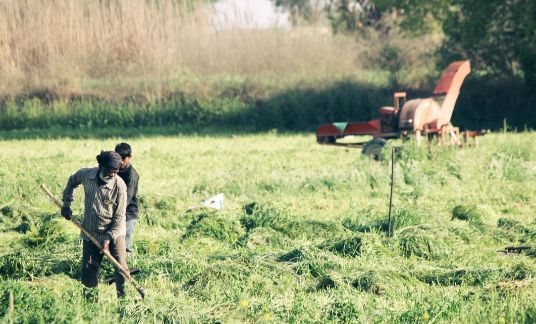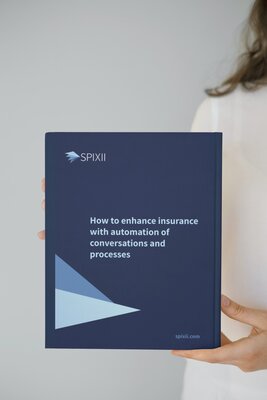6 min read
Meet BancoSol in Bolivia. Zurich Insurance, a leader in insurance who collaborated with Spixii, is supporting it via the Zurich Bolivia Group. Their Solsalud and SolSaludPlus policies provide in-patient and out-patient care, surgery, hospitalization, out-patient care, immunizations and preventive care, consultations, maternity, and transportation. Health insurance is offered for a mere $5/ month. Their policy is only 2 pages long and requires no medical examination.
To a traditional insurer, this would seem baffling. This goes against the established practices in the insurance industry, which both had come to know. In reality, BancoSol is simply providing microinsurance.
Microinsurance is both a challenge and an opportunity for the insurance industry. An opportunity because, as of yet, it is a hugely untapped market. A challenge because the traditional modus operandi of insurance won’t work in these areas.
So, why should insurers look to invest in it? What is it exactly and who is it for? What are the benefits of microinsurance? The A to Z of it is answered below.
But first of all, let's define microinsurance.
What is microinsurance?
According to the International Association of Insurance Supervisors (IAIS), microinsurance is:
‘protection of low-income people against specific perils in exchange for regular premium payments proportionate to the livelihood and cost of the risk involved.’
The microinsurance market is, thus, for the low-income demographics. Specifically, insurers are targeting people in rural India, South Africa, Brazil, and China.

Insurance can seem like ‘just another thing’ or a necessity for people living in the cities, depending on how we rate its importance. However, for those with little money, like a farmer in India or a new settler in a South American village, microinsurance can either seem like a gift from the Gods or something to be mistrusted. If the importance and intent are conveyed properly, though, microinsurance can help protect people’s livestock and crops, protect them against natural disasters, and help to grow their businesses.
Herein, we highlight the main differences between traditional insurance and microinsurance:
| Parameter | Traditional insurance | Microinsurance |
| Policies | Complex policies with many exclusions | Policies are written in simple language with few or no exclusions |
| Group policies | Yes | No |
| Client nature | Low risk in an established culture | High risk and vulnerability in a weak insurance culture |
| Premium calculation | Individualistic based on age and other factors | Price-sensitive market with group pricing and higher premium to cover ratios |
| Premium collection | Monthly/ yearly payments through debit/ invoice | Irregular payments depending on the client's financial situation |
| Claims handling | A complicated process with lots of document verification | Simple and fast procedures |
Almost everything done in the microinsurance industry is the direct opposite of traditional practices and set ways. That is why it is called a challenge.
Opportunities in the microinsurance market
Questions naturally arise when diving into the very nature of microinsurance: how can an insurance business make money then if the premium can be a few hundred dollars only? How to make insurance understandable and accessible to someone who has never heard of it? How to adjust claims in remote parts of the world?
This can be understood in terms of opportunity and long-term gain. In developing countries, the market for microinsurance is estimated to be between 1.5 and 3 billion policies. These policies are required and in demand for health, agriculture, property, and disaster cover. As of yet, microinsurance policies already provide coverage to 135 million people which is actually just 5% of the potential market. The remaining percentage is still to be roped in.
According to The MicroInsurance Centre’s estimate, the market could grow to a whopping 1 billion policyholders in the next 10 years which is 7 times more than today’s estimated market size.
Who will be responsible for making these strides? Currently, the main providers of microinsurance are commercial insurers. Those who are international providers and reinsurers are involved in microinsurance initiatives and direct offerings of products. Governments, NGOs and donors are the facilitators who are working to further expand the microinsurance market through direct/ indirect efforts.

Requirements for establishing a sustainable microinsurance market
1. Simplicity
Since the primary markets for microinsurance are low-income and largely third-world countries, it benefits the providers if they keep their products, policies, and processes simple. People there do not have experience in dealing with complex entities. It will be harder to create a market for something as new as microinsurance if people discover it’s taking too much energy to understand and not providing value for their money even.
2. Innovative distribution channels
What works in the city will most likely not work for microinsurance. Community-based and informal insurance schemes will be effective, innovative channels for establishing the roots of the microinsurance market. Commercial insurers will also need to work with NGOs, community-based organisations, MFIs and governments, to truly expand the reach of their services.
3. Developing an insurance culture
Not everyone will accept or trust insurance early on. This is why it is important to work at the grassroots level and spread the importance plus benefits of this offering among the people. Again, working with other organisations and the government to understand the market landscape will produce more efficient results.

Benefits to insurance providers
Here’s what insurers reap from sowing the seeds of microinsurance offerings:
- Portfolio diversification - through entering a new market with new products and new processes. This can positively impact overall business health.
- Reputational benefits - being associated with development efforts for low-income people will bring positive associations to the brand name.
- First mover advantage - and an early entry in a developing industry to gather market insights as early as possible for enabling business growth.
- Taking on corporate social responsibility - by improving people's lives and adding value to them.
How chatbots can help deliver microinsurance
The answer to this question lies in the target market itself. The first requirement for microinsurance highlighted above is simplicity. It is imperative to offer simple products through simple processes. From the experience of understanding a policy when about to buy, supported by a simple and immediate language, to the experience of claiming when needed, the target market demands simplicity all throughout.
Therefore chatbots, with an immediate conversational approach, and with the ability to manage large volumes of conversations (in fact unlimited) at any time of the day throughout different countries with different languages, seem to be a good option to consider.
Through a chatbot conversation, a policy can be explained in simple terms in any native language and the process to buy easy handled.
Now, people might think that the problem in that lies in the unavailability of digital means, such as internet, laptops or smartphones in developing countries.
According to Statista, 83.72% of people have smartphones today and 91.54% of people own mobile phones. On top of this, global smartphone users increased by 49.89% in 2017-2022 (source).
Whilst the percentage of smartphone penetration in the market might not be high, still, the number of smartphone users highlights the potential business opportunity.
We report here the list of the 5 countries with the lowest percentage of smartphone penetration:
| Country | Smartphone Penetration | Smartphone Users |
| Brazil | 51.40% | 109.34M |
| Philippines | 37.70% | 41.31M |
| Bangladesh | 32.40% | 53.3M |
| India | 31.80% | 439.42M |
| Pakistan | 18.40% | 40.59M |
And the list of countries of the 5 countries with the highest number of smartphone users:
| Country | Smartphone Penetration | Smartphone Users |
| China | 63.80% | 109.34M |
| India | 31.80% | 439.42M |
| United States | 81.60% | 270M |
| Indonesia | 58.60% | 160.23M |
| Brazil | 51.40% | 109.34 |
As we can see, many countries in the second list are considered developing countries. For example, India, whilst having a very low penetration percentage, still makes for the second country considering its number of smartphone users.
This clearly shows a good investment opportunity for insurance businesses in general and the potential to deliver new services at low cost through automated chatbot conversations.
To conclude, the microinsurance market is still in its infancy stage. Insurers to take the leap to establish their footing will benefit in the long run. Not only will they be the early pioneers in this market, but eventually, they’ll also be able to gain the trust of the people they are insuring. They’ll also help to reduce poverty and contribute to uplifting the living standards of these people. Corporate and social benefits can be reaped together.
To get an overview of the Spixii proposition and its conversational platform, download the free whitepaper down below ⬇⬇⬇

